Diethyl isophthalate
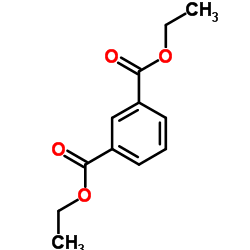
Diethyl isophthalate structure
|
Common Name | Diethyl isophthalate | ||
|---|---|---|---|---|
| CAS Number | 636-53-3 | Molecular Weight | 222.237 | |
| Density | 1.1±0.1 g/cm3 | Boiling Point | 302.0±10.0 °C at 760 mmHg | |
| Molecular Formula | C12H14O4 | Melting Point | 11.5ºC | |
| MSDS | N/A | Flash Point | 157.7±8.5 °C | |
| Name | Diethyl isophthalate |
|---|---|
| Synonym | More Synonyms |
| Density | 1.1±0.1 g/cm3 |
|---|---|
| Boiling Point | 302.0±10.0 °C at 760 mmHg |
| Melting Point | 11.5ºC |
| Molecular Formula | C12H14O4 |
| Molecular Weight | 222.237 |
| Flash Point | 157.7±8.5 °C |
| Exact Mass | 222.089203 |
| PSA | 52.60000 |
| LogP | 3.51 |
| Vapour Pressure | 0.0±0.6 mmHg at 25°C |
| Index of Refraction | 1.508 |
Synonym: Section 2 - COMPOSITION, INFORMATION ON INGREDIENTS
Risk Phrases: None Listed. Section 3 - HAZARDS IDENTIFICATION EMERGENCY OVERVIEW
Not available. Potential Health Effects Eye: May cause eye irritation. Skin: May cause skin irritation. May be harmful if absorbed through the skin. Ingestion: May cause irritation of the digestive tract. May be harmful if swallowed. Inhalation: May cause respiratory tract irritation. May be harmful if inhaled. Chronic: Not available. Section 4 - FIRST AID MEASURES Eyes: Flush eyes with plenty of water for at least 15 minutes, occasionally lifting the upper and lower eyelids. Get medical aid. Skin: Get medical aid. Flush skin with plenty of water for at least 15 minutes while removing contaminated clothing and shoes. Ingestion: Get medical aid. Wash mouth out with water. Inhalation: Remove from exposure and move to fresh air immediately. Notes to Physician: Treat symptomatically and supportively. Section 5 - FIRE FIGHTING MEASURES General Information: As in any fire, wear a self-contained breathing apparatus in pressure-demand, MSHA/NIOSH (approved or equivalent), and full protective gear. Extinguishing Media: Use water spray, dry chemical, carbon dioxide, or chemical foam. Section 6 - ACCIDENTAL RELEASE MEASURES General Information: Use proper personal protective equipment as indicated in Section 8. Spills/Leaks: Absorb spill with inert material (e.g. vermiculite, sand or earth), then place in suitable container. Section 7 - HANDLING and STORAGE Handling: Avoid breathing dust, vapor, mist, or gas. Avoid contact with skin and eyes. Storage: Store in a cool, dry place. Store in a tightly closed container. Section 8 - EXPOSURE CONTROLS, PERSONAL PROTECTION Engineering Controls: Use adequate ventilation to keep airborne concentrations low. Exposure Limits CAS# 636-53-3: Personal Protective Equipment Eyes: Not available. Skin: Wear appropriate protective gloves to prevent skin exposure. Clothing: Wear appropriate protective clothing to prevent skin exposure. Respirators: Follow the OSHA respirator regulations found in 29 CFR 1910.134 or European Standard EN 149. Use a NIOSH/MSHA or European Standard EN 149 approved respirator if exposure limits are exceeded or if irritation or other symptoms are experienced. Section 9 - PHYSICAL AND CHEMICAL PROPERTIES Physical State: Viscous liquid Color: Not available. Odor: mild odor - characteristic odor pH: Not available. Vapor Pressure: Not available. Viscosity: Not available. Boiling Point: 166 deg C @10mmHg Freezing/Melting Point: 12 deg C Autoignition Temperature: Not available. Flash Point: 163 deg C ( 325.40 deg F) Explosion Limits, lower: Not available. Explosion Limits, upper: Not available. Decomposition Temperature: Solubility in water: Insoluble. Specific Gravity/Density: 1.123 Molecular Formula: C12H14O4 Molecular Weight: 222.24 Section 10 - STABILITY AND REACTIVITY Chemical Stability: Stable. Conditions to Avoid: Incompatible materials. Incompatibilities with Other Materials: Strong oxidizing agents. Hazardous Decomposition Products: Carbon monoxide, carbon dioxide. Hazardous Polymerization: Will not occur. Section 11 - TOXICOLOGICAL INFORMATION RTECS#: CAS# 636-53-3: NT2500000 LD50/LC50: Not available. Carcinogenicity: Diethyl isophthalate - Not listed by ACGIH, IARC, or NTP. Other: See actual entry in RTECS for complete information. Section 12 - ECOLOGICAL INFORMATION Section 13 - DISPOSAL CONSIDERATIONS Dispose of in a manner consistent with federal, state, and local regulations. Section 14 - TRANSPORT INFORMATION IATA Not regulated as a hazardous material. IMO Not regulated as a hazardous material. RID/ADR Not regulated as a hazardous material. Section 15 - REGULATORY INFORMATION European/International Regulations European Labeling in Accordance with EC Directives Hazard Symbols: Not available. Risk Phrases: Safety Phrases: S 24/25 Avoid contact with skin and eyes. WGK (Water Danger/Protection) CAS# 636-53-3: No information available. Canada CAS# 636-53-3 is listed on Canada's NDSL List. CAS# 636-53-3 is not listed on Canada's Ingredient Disclosure List. US FEDERAL TSCA CAS# 636-53-3 is listed on the TSCA inventory. SECTION 16 - ADDITIONAL INFORMATION N/A |
CHEMICAL IDENTIFICATION
HEALTH HAZARD DATAACUTE TOXICITY DATA
|
| Hazard Codes | Xi |
|---|---|
| HS Code | 2917399090 |
|
~% 
Diethyl isophthalate CAS#:636-53-3 |
| Literature: Synthesis, , # 1 p. 40 - 45 |
|
~% 
Diethyl isophthalate CAS#:636-53-3 |
| Literature: Journal of the Chemical Society, , vol. 69, p. 1241 Journal of the Chemical Society, , vol. 77, p. 278 |
|
~% 
Diethyl isophthalate CAS#:636-53-3 |
| Literature: Journal of Molecular Structure, , vol. 554, # 2-3 p. 211 - 223 |
|
~% 
Diethyl isophthalate CAS#:636-53-3 |
| Literature: Tetrahedron, , vol. 60, # 7 p. 1683 - 1691 |
| Precursor 6 | |
|---|---|
| DownStream 9 | |
| HS Code | 2917399090 |
|---|---|
| Summary | 2917399090 aromatic polycarboxylic acids, their anhydrides, halides, peroxides, peroxyacids and their derivatives。Supervision conditions:None。VAT:17.0%。Tax rebate rate:9.0%。MFN tariff:6.5%。General tariff:30.0% |
| Diethyl isophthalate |
| diethyl benzene-1,3-dicarboxylate |
| 1,3-Benzenedicarboxylic acid, diethyl ester |
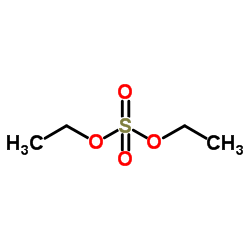






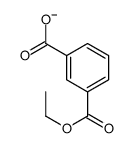 CAS#:18189-42-9
CAS#:18189-42-9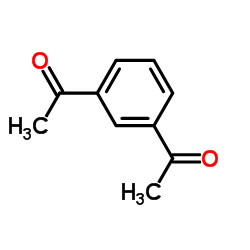 CAS#:6781-42-6
CAS#:6781-42-6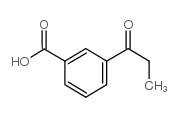 CAS#:74380-71-5
CAS#:74380-71-5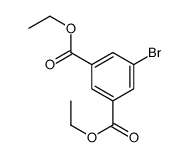 CAS#:127437-29-0
CAS#:127437-29-0 CAS#:10560-13-1
CAS#:10560-13-1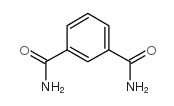 CAS#:1740-57-4
CAS#:1740-57-4 CAS#:2305-31-9
CAS#:2305-31-9 CAS#:4654-20-0
CAS#:4654-20-0
